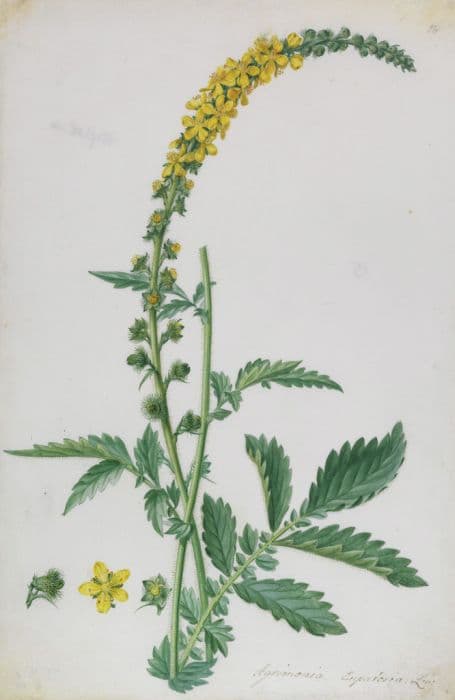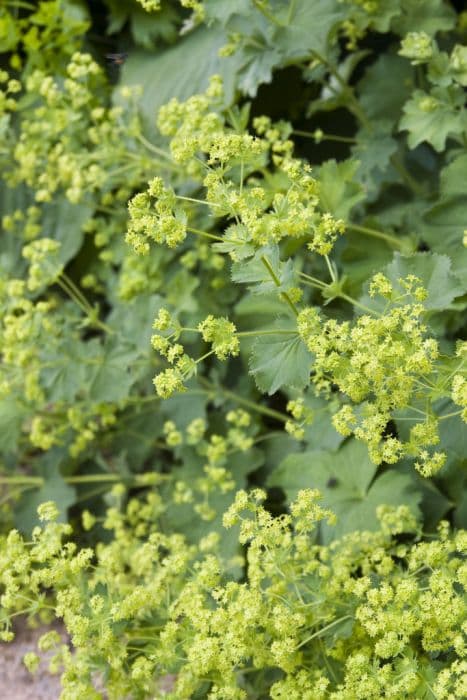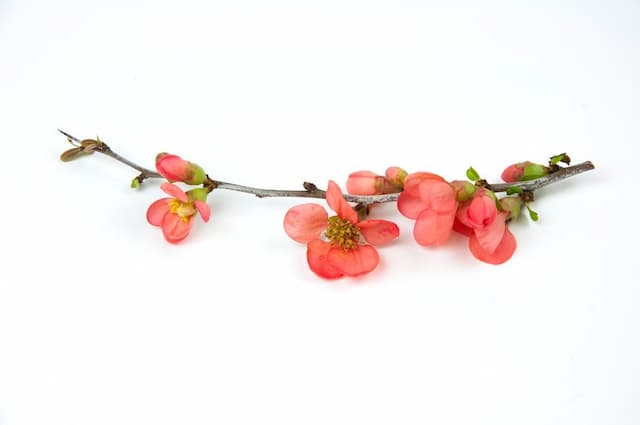Lipstick Strawberry Fragaria 'Lipstick'

ABOUT
The plant known as 'Lipstick' is a variety of ornamental strawberry that is appreciated for its decorative appeal. It features vibrant, deep red flowers that are rich in color and resemble small roses due to their layered petals, offering a striking visual contrast against the foliage. The leaves of the 'Lipstick' strawberry are a lush green, with a glossy texture and a somewhat serrated edge, giving the plant a full and vibrant appearance throughout its growing season. The flowers stand out prominently against the greenery, attracting attention and pollinators alike to the garden display. Although it is a strawberry variety, 'Lipstick' is more commonly grown for its ornamental beauty than for fruit production, as its berries are typically small and not the focus of cultivation.
About this plant
 Names
NamesFamily
Rosaceae.
Synonyms
Ornamental Strawberry, Lipstick Strawberry.
Common names
Fragaria × ananassa 'Lipstick'
 Toxicity
ToxicityTo humans
The 'Lipstick' strawberry is generally considered non-toxic to humans. This plant, known for its ornamental and edible strawberries, does not commonly cause poisoning when parts of it are ingested. As with any plant, some individuals may experience allergic reactions or stomach upset if ingested in large quantities, but it is not known to have toxic effects.
To pets
The 'Lipstick' strawberry is typically safe for pets and is not known to be toxic. This ornamental plant, which also produces edible strawberries, is not associated with poisoning in pets. However, as with humans, pets can exhibit individual sensitivities, and ingesting large amounts may lead to gastrointestinal upset such as vomiting or diarrhea.
 Characteristics
CharacteristicsLife cycle
Perennials
Foliage type
Deciduous
Color of leaves
Green
Flower color
Pink
Height
1 foot (0.3 meters)
Spread
1 foot (0.3 meters)
Plant type
Herb
Hardiness zones
6
Native area
Americas
Benefits
 General Benefits
General Benefits- Ornamental Appeal: Fragaria 'Lipstick' features attractive pink-red flowers that enhance garden aesthetics.
- Edible Fruit: This plant produces strawberries that can be eaten fresh or used in various culinary dishes.
- Groundcover: It has a low-growing habit, which makes it suitable for use as a groundcover to suppress weeds.
- Wildlife Attraction: Its flowers attract pollinators, while the fruit can attract birds and other wildlife.
- Hardy Plant: Fragaria 'Lipstick' is known for its hardiness, allowing it to withstand colder temperatures and some tough growing conditions.
- Low Maintenance: It generally requires minimal care once established, making it suitable for low-maintenance gardens.
- Container Gardening: This strawberry variety is well-suited for container or balcony gardening due to its compact size.
- Perennial Growth: As a perennial, it will return each year, providing long-term garden interest without the need for replanting annually.
 Medical Properties
Medical PropertiesThis plant is not used for medical purposes.
 Air-purifying Qualities
Air-purifying QualitiesThis plant is not specifically known for air purifying qualities.
 Other Uses
Other Uses- Culinary Coloring: The red fruit of the 'Lipstick' strawberry can be used to naturally color desserts and pastries, presenting an alternative to artificial dyes.
- Photography Prop: The vibrant red strawberries and flowers serve as an excellent prop for photographers looking for a pop of color in food or garden photography.
- Edible Arrangements: The 'Lipstick' strawberry can be included in edible bouquets or centerpieces for events, adding both beauty and a sweet treat for guests.
- Educational Tool: Schools and educational programs can use the plant to teach children about the growth cycle of strawberries and the importance of pollinators.
- Wedding Decor: The attractive flowers and fruit can be used in wedding decorations or as part of a natural wedding bouquet for a rustic theme.
- Craft Dye: The juice from the strawberries can be used in crafts to dye fabrics or create natural inks for painting and stamping.
- Holiday Decor: During the festive season, the red strawberries can be incorporated into wreaths or table settings as natural ornaments.
- Homemade Cosmetics: Pureed strawberries from the plant can be used as a base for homemade lip balms or cheek stains, providing a slight tint and fragrance.
- Fruit Leather: The berries can be pureed and dried to make homemade fruit leather snacks, offering a natural and healthy option for children and adults alike.
- Animal Enrichment: The fruit and plants can be used in the enrichment of certain pets and captive animals, such as tortoises and rabbits, that can benefit from eating fresh strawberry plants.
Interesting Facts
 Feng Shui
Feng ShuiThe Strawberry 'Lipstick' is not used in Feng Shui practice.
 Zodiac Sign Compitability
Zodiac Sign CompitabilityThe Strawberry 'Lipstick' is not used in astrology practice.
 Plant Symbolism
Plant Symbolism- Innocence – The Fragaria, also known as the strawberry, often symbolizes purity and innocence due to its heart-shaped appearance and bright red color.
- Love and Passion – As ‘Lipstick’ suggests a vibrant red, strawberries are also associated with Venus, the goddess of love, hinting at desire and sensuality.
- Fertility and Abundance – Strawberries have many seeds on their outer surface, which can represent fertility, and their tendency to spread can symbolize abundance.
- Perfection and Righteousness – Because of their near-perfect appearance and sweet taste, strawberries can represent the idea of perfection and righteousness.
 Water
WaterThe Strawberry 'Lipstick' prefers consistently moist soil, so it should be watered regularly but with care to avoid waterlogging. Water once a week with approximately one gallon of water per square yard, ensuring that the water penetrates deeply into the soil to encourage deep root growth. Increase the watering frequency during periods of drought or extreme heat to maintain the soil's moisture, potentially watering two to three times a week. Reduce the amount of water in cooler or rainy seasons to prevent root rot. Always check the top inch of soil for dryness before watering to avoid overwatering.
 Light
LightStrawberry 'Lipstick' thrives best in full sun conditions. It should be placed in a spot that gets at least six to eight hours of direct sunlight each day. If you are planting it outside, an area with southern exposure is ideal to ensure that the plant receives ample sunlight.
 Temperature
TemperatureStrawberry 'Lipstick' is hardy and can tolerate a temperature range from about 20 degrees to 85 degrees Fahrenheit. The ideal temperature range for optimal growth is between 60 and 75 degrees Fahrenheit. Protection from frost is necessary, as temperatures below 20 degrees can damage or kill the plant.
 Pruning
PruningPruning Strawberry 'Lipstick' is essential for healthy growth and fruit production. Remove dead leaves and spent flowers regularly to encourage new growth and to prevent disease. The best time to prune is in late fall or early spring after the last frost has passed. Pruning can be done as needed throughout the growing season to maintain a tidy appearance and promote air circulation among the leaves.
 Cleaning
CleaningAs needed
 Soil
SoilOrnamental strawberry 'Lipstick' prefers well-draining soil rich in organic matter with a slightly acidic to neutral pH of 6.0 to 7.0. A good soil mix for this plant could include equal parts of loam, peat moss, compost, and perlite or sand to ensure adequate drainage and fertility.
 Repotting
RepottingOrnamental strawberries like 'Lipstick' should typically be repotted every 1-2 years to refresh the soil and provide room for growth. This can be done either in early spring or after the plant finishes fruiting, if applicable.
 Humidity & Misting
Humidity & MistingOrnamental strawberry 'Lipstick' thrives in moderate humidity levels, ideally between 40% to 60%. While it can tolerate lower humidity, it's important to ensure the air isn’t too dry, particularly when grown indoors.
 Suitable locations
Suitable locationsIndoor
Provide bright light, water when topsoil is dry.
Outdoor
Full sun to part shade, well-drained soil, water regularly.
Hardiness zone
4-9 USDA
 Life cycle
Life cycleThe life cycle of the ornamental strawberry 'Lipstick' (Fragaria × ananassa) starts with seed germination — usually in spring or when conditions are favorable for growth — where the seedlings emerge from the seeds. Following germination, the seedlings develop into juvenile plants with characteristic trifoliate leaves. As the plants mature, they enter the vegetative stage, growing larger and producing more leaves and runners, which can root to form new plants. The reproductive stage is marked by the emergence of flowers, typically vibrant red, which after pollination, can develop into small, often inedible fruits. After fruiting, plants may enter a period of dormancy, especially in regions with cold winters, where they reduce metabolic activity until favorable conditions return. Throughout its life, the 'Lipstick' plant continues to spread and produce new runners and flowers in a perennial cycle, assuming optimal growing conditions are maintained.
 Propogation
PropogationPropogation time
Spring-Early Summer
The most popular method to propagate the Fragaria 'Lipstick', commonly known as the Lipstick Strawberry, is through runners, which are long shoot extensions that grow outward from the main plant. During late spring to early summer, the plant sends out these runners. When they touch the soil, they can form roots and develop into new plants. For successful propagation, one may pin the runner down to the soil to encourage rooting or place it in a small pot filled with potting mix positioned close to the mother plant. Once the runner has established roots, it can be severed from the parent and transplanted to a desired location. This vegetative method maintains the mother plant's characteristics in the new plants.









